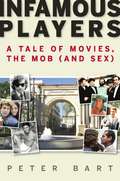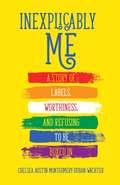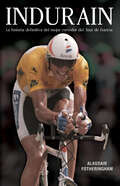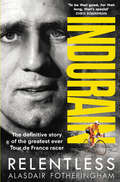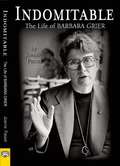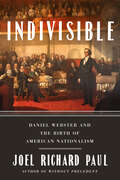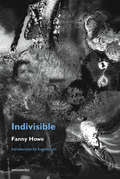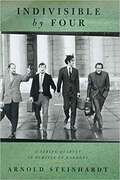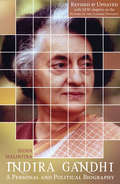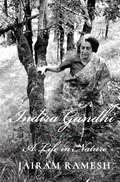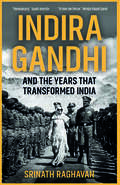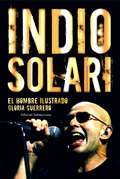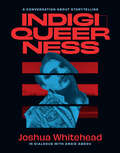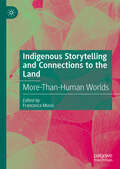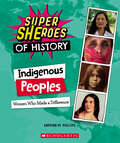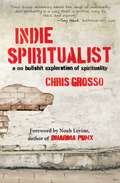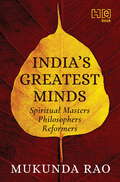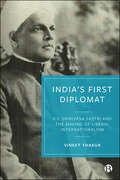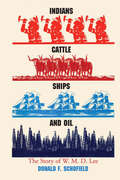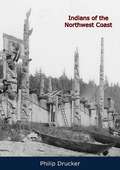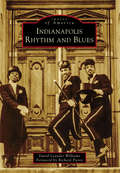- Table View
- List View
Infamous Players
by Peter BartIn 1967, Peter Bart, then a young family man and rising reporter for the New York Times, decided to upend his life and enter into the dizzying world of motion pictures. Infamous Players is the story of Bart's whirlwind journey at Paramount, his role in its triumph and failures, and how a new kind of filmmaking emerged during that time.When Bart was lured to Paramount by his friend and fellow newcomer, the legendary Robert Evans, the studio languished, its slate riddled with movies that were out of touch with the dynamic sixties. By the time Bart had left Paramount in 1975, the studio had completed a remarkable run with such films as The Godfather, Rosemary's Baby, Harold and Maude, Love Story, Chinatown, Paper Moon, and True Grit. But this new golden era at Paramount was also fraught with chaos and company turmoil. Drugs, sex, runaway budgets, management infighting, and even the Mafia started finding their way onto the Paramount backlot, making it surely one of the worst-run studios in the history of the movie industry.As Peter reflects on the New Hollywood era at Paramount with behind-the-scenes details and insightful analysis, here too are his fascinating recollections of the icons from that era: Warren Beatty, Steve McQueen, Robert Redford, Clint Eastwood, Jack Nicholson, Marlon Brando, Al Pacino, Francis Ford Coppola, Roman Polanski, and Frank Sinatra among others.For over five decades, first on the inside as a studio executive, and later as the longtime editor-in-chief of Variety, Peter Bart has viewed Hollywood from an incomparable vantage point. The stories he tells and the lessons we learn from Infamous Players are essential for anyone who loves movies.
Inexplicably Me: A Story of Labels, Worthiness, and Refusing to Be Boxed In
by Chelsea Austin Montgomery-Duban WächterA hilariously moving and inspirational memoir of a girl with two gay dads, navigating her way through life with joy, love, gratitude, and an excellent sense of humor. As the daughter of two gay fathers in the 90s, Chelsea has always had a different outlook than some people. And yet, her message is one of universal importance – love is the most important force in the world. Through her moving and at times hilarious memoir, Chelsea reflects on how we are all much more similar than we are different. Living &“two doors down from normal,&” Chelsea quickly learned that society loves to put people in boxes, but these boxes do not always reflect how we feel about ourselves. Through Inexplicably Me, Chelsea works to bring people together in love and acceptance and to illustrate that, while her story may seem worlds away from others, we all strive for happiness and love. From sharing the stage with President Obama when she was only eighteen years old, to her father spending her senior year of college in federal prison camp, to her biological mother dying of cancer when she was only 56, Chelsea explores her painful and joyful experiences with the hope that readers will find inspiration to face their own challenges and embrace their own joys. Inexplicably Me is a bridge for those who fear what they don&’t understand, as well as a possibility for those who have lacked love in their lives to see how they can start to access their self-worth, begin achieving their dreams, and start loving themselves again. Most of all, it is a reminder that everyone will have an opinion about who you are supposed to be, but you, and only you, get to decide exactly who it is you want to be.
Industrial Espionage Is More Effective Than R&D
by Erik Meyersson Curt NickischHBR Interview. An Interview with Erik Meyersson by Curt Nickisch Two researchers surveil the economic returns that spying produced during the Cold War.
Indurain: La historia definitiva del mejor corredor del Tour de Francia
by Alsdair FotheringhamLa historia definitiva del mejor corredor del Tour de Francia: Miguel Indurain. Como el gran conquistador y heroe de los 90s, Miguel Indurain rápidamente huyó de la fama y de las abrumaciones; manteniéndose humilde, tímido y muy cercano a sus raices y a su tierra. A través de su personalidad, su voluntad de hierro y sus soberbias habilidades para dominar la bicicleta, Indurain fue descrito muchas veces como una máquina perfecta del ciclismo. Todavía en 1996 se vió al mejor campeón del Tour de todos los tiempos, con una voluntad de hierro y una fuerza arrolladora, año en el que de manera abrupta decidió poner fin a su carrera profesional y a su supremacía. En este libro, Alasdair Fotheringham llega al corazón de este enigmático campeón, reviviendo sus logros históricos y explorando la dirección que siguieron varias generaciones de ciclistas españoles, llevando a su deporte a un nivel jamás antes conocido en España. A través de decenas de entrevistas con directores del Tour de Francia, ciclistas contemporáneos, compañeros de equipo y a Prudencio Indurain, el autor nos desvela en esta vibrante biografía, el lado más humano de uno de los mejores deportistas de la historia de España. La crítica ha dicho...«Un relato que retrata el lado más humano del pentampeón de la ronda francesa a través de entrevistas con su entorno familiar, entre ellos su hermano 'Pruden', directores y ciclistas más cercanos.»Europa Press«Alasdair Fotheringham, afincado en España, indaga en el lado más humano del único ciclista que ha sido capaz de vencer cinco consecutivas en el Tour de Francia.»El País «La apasionante historia de un campeón excepcional y cercano. Indurain, gran biografía, muy bien escrita y documentada.»Pedro Pablo Alonso«Consigue brillantemente hacernos llegar una imagen muy ajustada a la personalidad de Indurain.»Ciclismoylectura «El que ha vivido esa época dorada del ciclismo español, disfrutará de estas páginas.»Alberto López Escuer, Salesianos cooperadores
Indurain
by Alasdair FotheringhamMiguel Indurain is Spain’s greatest cyclist of all time and one of the best Tour racers in history. He is the only bike rider to have won five successive Tours de France, as well as holding the title for the youngest ever race leader in the Tour of Spain. This is his story. As the all-conquering hero of the 90s, Indurain steadfastly refused to be overwhelmed by fame; remaining humble, shy and true to his country roots. Along with his superhuman calmness, iron will-power and superb bike handling skills, he was often described as a machine. Yet 1996 saw Indurain, the Tour’s greatest ever champion, spectacularly plummet, bringing his career and supremacy to an abrupt end.In Indurain, Alasdair Fotheringham gets to the heart of this enigmatic character, reliving his historic accomplishments in vibrant colour, and exploring how this shaped the direction taken by generations of Spanish racers - raising Spanish sport to a whole new level.
Indomitable: The Life of Barbara Grier
by Joanne Passet"Whatever else will be said about her--and you can bet there will be plenty, because Barbara was no stranger to controversy--the one thing that is true above all else is that she was the most important person in lesbian publishing in the world. Without her boldness and her audacity, there might not be the robust lesbian publishing industry there is today. ” --Teresa DeCrescenzo Barbara Grier--feminist, activist, publisher, and archivist--was many things to different people. Perhaps most well known as one of the founders of Naiad Press, Barbara’s unapologetic drive to make sure that lesbians everywhere had access to books with stories that reflected their lives in positive ways was legendary. Barbara changed the lives of thousands of women in her lifetime. For the first time, historian Joanne Passet uncovers the controversial and often polarizing life of this firebrand editor and publisher with new and never before published letters, interviews, and other personal material from Grier’s own papers. Passet takes readers behind the scenes of The Ladder, offering a rare window onto the isolated and bereft lives lesbians experienced before the feminist movement and during the earliest days of gay political organizing. Through extensive letters between Grier and her friend novelist Jane Rule, Passet offers a virtual diary of this dramatic and repressive era. Passet also looks at Grier’s infamous "theft” of The Ladder’s mailing list, which in turn allowed her to launch and promote Naiad Press, the groundbreaking women’s publishing company she founded with partner Donna McBride in 1973. Naiad went on to become one of the leaders in gay and lesbian book publishing and for years helped sustain lesbian and feminist bookstores--and readers--across the country. JOANNE PASSET is Professor of History Emerita at Indiana University East. Her previous books include Sex Variant Woman: The Life of Jeannette Howard Foster, Sex Radicals and the Quest for Women's Equality, Cultural Crusaders: Women Librarians in the American West, and Aspirations and Mentoring in an Academic Environment (with Mary Niles Maack).
Indivisible: Daniel Webster and the Birth of American Nationalism
by Joel Richard PaulThe story of how Daniel Webster popularized the ideals of American nationalism that helped forge our nation&’s identity and inspire Abraham Lincoln to preserve the Union When the United States was founded in 1776, its citizens didn&’t think of themselves as &“Americans.&” They were New Yorkers or Virginians or Pennsylvanians. It was decades later that the seeds of American nationalism—identifying with one&’s own nation and supporting its broader interests—began to take root. But what kind of nationalism should Americans embrace? The state-focused and racist nationalism of Thomas Jefferson and Andrew Jackson? Or the belief that the U.S. Constitution made all Americans one nation, indivisible, which Daniel Webster and others espoused? In Indivisible, historian and law professor Joel Richard Paul tells the fascinating story of how Webster, a young New Hampshire attorney turned politician, rose to national prominence through his powerful oratory and unwavering belief in the United States and captured the national imagination. In his speeches, on the floors of the House and Senate, in court, and as Secretary of State, Webster argued that the Constitution was not a compact made by states but an expression of the will of all Americans. As the greatest orator of his age, Webster saw his speeches and writings published widely, and his stirring rhetoric convinced Americans to see themselves differently, as a nation bound together by a government of laws, not parochial interests. As these ideas took root, they influenced future leaders, among them Abraham Lincoln, who drew on them to hold the nation together during the Civil War. As he did in Without Precedent and Unlikely Allies, Joel Richard Paul has written in Indivisible both a compelling history and a fascinating account of one of the founders of our national perspective.
Indivisible, new edition (Semiotext(e) / Native Agents)
by Fanny HoweThe conclusion of a radically philosophical and personal series of Fanny Howe novels animated by questions of race, spirituality, childhood, transience, resistance, and poverty.First published by Semiotexte in 2001, Indivisible concludes a radically philosophical and personal series of Fanny Howe novels animated by questions of race, spirituality, childhood, transience, wonder, resistance, and poverty. Depicting the tempestuous multiracial world of artists and activists who lived in working-class Boston during the 1960s, Indivisible begins when its narrator, Henny, locks her husband in a closet so that she might better discuss things with God. On the verge of a religious conversion, Henny attempts to make peace with the dead by telling their stories.
Indivisible By Four: A String Quartet In Pursuit Of Harmony
by Arnold SteinhardtThe Guarneri Quartet is fabled for its unique longevity and high-spirited virtuosity. Here is its story from the inside--a story filled with drama, humor, danger, compassion, and, of course, glorious music. A player who studies and performs the exalted string-quartet repertoire has opted for a very special life. Arnold Steinhardt, tracing his own development as a student, orchestra player, and budding young soloist, gives a touching account of how he and his intrepid colleagues were converted to chamber music despite the daunting odds against success. And he reveals, as no one has before, the intensely difficult process by which--on the battlefield of daily three-hour rehearsals--four individualists master and then overcome the confining demands of ensemble playing.
Indira Gandhi: A Personal and Political Biography
by Inder MalhotraA definitive, incisive and no-holds-barred account of the life and times of one of India’s most charismatic and prominent leaders who has left a distinctive stamp on history For almost two decades, Indira Gandhi stood out the world’s most powerful woman. In India, there is hardly a neutral opinion about her. She is either adored or abused. Inder Malhotra’s biography explores objectively this highly complex and very private person – right from her childhood to her last days – who lived under constant public gaze and learnt to adjust her demanour to the occasion, rigorously concealing her true self and real feelings. This comprehensive work recounts her unusual and unhappy ‘love marriage’ to Feroze Gandhi and examines the ambivalent influence of her father, Jawaharlal Nehru, on her career. It also focuses on her relationship with her sons: Sanjay, her chosen heir, and his elder brother Rajiv, who, ironically, succeeded her as the prime minister of India. The author traces Indira Gandhi’s own evolution from a ‘dumb doll’ to the ‘empress of India’ and her downfall, the seeds of which were sown when she imposed the Emergency on 25 June 1975. This phase marked a dark period in the post-independence era. Her party (the Congress) lost the March 1997 general election and she was out of power for nearly three years. The author also describes the later revival in her fortunes, when she returned as prime minister in January 1980. During her second term, she had to order the Indian Army to enter the Golden Temple in Amritsar (the holiest shrine of the Sikhs) to flush out the militants hiding there. This move led to her being assassinated by her own Sikh bodyguards on 31 October 1984. In the revised and updated edition, Inder Malhotra throws light on the impact that Indira Gandhi had (and continues to have) on Indian politics after her death when her mantle fell on members of her family, including Rajiv Gandhi first and Sonia Gandhi later. This is not only a compulsive and gripping narrative about a remarkable personality but also a fascinating study of India after independence.E41
Indira Gandhi: A Life in Nature
by Jairam RameshIndira Gandhi, prime minister of India for sixteen years, was as charismatic as she was controversial–at once admired and criticized for her political judgements and actions. Yet beyond such debate, what has not been fully understood is her life-long communion with nature and how that defined her very being. Weaving personal, political and environmental history, politician-scholar Jairam Ramesh narrates the compelling story of Indira Gandhi, the naturalist. He tells us why and how she came to make a private passion a public calling; how her views on the environment remained steadfast even as her political and economic stances changed; how her friendships with conservationists led to far-reaching decisions to preserve India’s biodiversity; how she urged, cajoled and persuaded her colleagues as she took significant decisions particularly regarding forests and wildlife; and how her own finely-developed instincts and beliefs resulted in landmark policies, programmes, initiatives, laws and institutions, that have endured. Drawing extensively from unpublished letters, notes, messages and memos, Indira Gandhi: A Life in Nature offers a lively, conversational narrative of a relatively little known but fascinating aspect of Indira Gandhi’s tumultuous life. Equally, the book acts as a compass to India at a time when the country faces the formidable challenge of ensuring ecological security and sustainability in its pursuit of high economic growth.
Indira Gandhi and the Years that Transformed India
by Srinath RaghavanThe gripping story of Indira Gandhi&’s premiership—and the profound influence she had on India Indira Gandhi&’s ascent as prime minister of India in 1966 was entirely unforeseen. But she soon emerged as one of the most powerful political leaders of her times, who transformed the world&’s largest democracy. She served as prime minister for a remarkable fifteen years, leaving behind a complex and deeply controversial legacy. In this fascinating account, Srinath Raghavan tells the story of Indira Gandhi&’s political career and the momentous changes that India experienced under her leadership. From her tentative start in high office to her remarkable electoral victories, the dark days of the Emergency of 1975–77, and her assassination at the hands of her bodyguards in 1984, Raghavan sheds new light on her politics and government, as well as on her adversaries and critics. He shows how the 1970s were the hinge on which the history of the country turned—and how Indira Gandhi transformed the new postcolonial nation into the India of today.
Indio Solari: El hombre ilustrado
by Gloria GuerreroPocos personajes surgidos de la música popular ofrecen tantos aspectosdestacables como el Indio Solari, ex líder de Patricio Rey y susredonditos de ricota. Él inventó formas de defensa y ataque a las fortalezas convencionales dela estupidez, abrió nuevos caminos, difundió una lírica propia queconvoca a montones de admiradores de distintas generaciones. Elindividuo conocido como el Indio Solari sigue siendo un misterio.Escrito con una precisión acorde con el ritmo y modo en que la voz delIndio se ajusta a sus canciones, es el mejor homenaje al iluminadoadalid del rock argentino, la recompensa más justa que pueden recibiruna actividad y una actitud determinantes en la sociedad y la cultura.Un libro serio, con el suspenso narrativo de una novela, que se lee y seoye como un reclamo ricotero insoslayable.
Indigiqueerness: A Conversation about Storytelling
by Joshua WhiteheadEvolving from a conversation between Joshua Whitehead and Angie Abdou, Indigiqueerness is part dialogue, part collage, and part memoir. Beginning with memories of his childhood poetry and prose and travelling through the library of his life, Whitehead contemplates the role of theory, Indigenous language, queerness, and fantastical worlds in all his artistic pursuits. This volume is imbued with Whitehead’s energy and celebrates Indigenous writers and creators who defy expectations and transcend genres.
Indigenous Storytelling and Connections to the Land: More-Than-Human Worlds
by Francesca MussiThis book builds on the perspective that, for Indigenous peoples, relations to the land are familial, intimate, intergenerational, spiritual, instructive, and life nourishing, and it is these relations that Western societies sought to destroy as part of their colonial projects of territorial conquest and exploitation of resources. Positioning storytelling as a research methodology and a model of decolonial practice, this edited collection seeks to explore the following key questions: how does Indigenous storytelling contribute to understanding Indigenous identity and the crucial role of the land in Indigenous ways of life? How can Indigenous storytelling subvert colonial narratives of the land? How can Indigenous storytelling contribute to addressing colonial exploitations of the land and its resources? Can Indigenous storytelling become a rich mode for the investigation of current climate crises? And, finally, how does storytelling assist Indigenous peoples in restoring their intimate relations to the land and its natural gifts? Through critical analysis of a unique range of Indigenous storytelling practices, including fiction, performative art, new media platforms, archaeological findings and personal live-experienced stories, this collection aims to examine the interplay between colonialism and current environmental challenges, and to expose the impacts – past, present, and future – of Western worldviews on Indigenous connections to the land, whilst simultaneously bringing to the fore Indigenous ethos of care and land custodianship.
Indigenous Peoples: Women Who Made a Difference (Super SHEroes of History)
by Katrina M. PhillipsMeet the Super SHEroes of History, the women who have shaped history and society since ancient times.Indigenous women were prominent members of their communities long before Europeans reached North America. When the newcomers arrived, they played a key role in holding their communities together in the face of social turmoil. Some joined male warriors to fight European settlement, while others such as Nanyehi/Nancy Ward argued that the two peoples could coexist peacefully. Indigenous women led political and legal fights to preserve their traditional rights throughout the 20th century and still do so today. Some became active campaigners in numerous causes, especially in the struggle to protect sacred lands from construction. This book tells their stories and describes their vital contributions.ABOUT THIS SERIES: From leading warriors into battle in Tang China to fighting for Civil Rights, exploring the deserts of Asia, and standing up for Indigenous peoples around the world, women have shaped history and society since ancient times. Often, however, their achievements went unrecognized. With lively text, compelling photography, and art, Super SHEroes of History brings herstory to life, illuminating the achievements of remarkable women from all backgrounds and all periods of time. The aim of this four-book series is to bring their inspiring stories to young readers— and to use engaging interactive prompts and questions to persuade them that anyone can grow up to change the world!
Indie Spiritualist: A No Bullshit Exploration of Spirituality
by Chris GrossoBrutally honest and radically unconventional, Chris Grosso's collection of stories and musings about his meandering journey of self-inquiry, recovery, and acceptance shows what it means to live a truly authentic spiritual life. Set amongst the backdrop of Grosso's original music (included for download via QR codes in the text), Indie Spiritualist encourages you to accept yourself just as you are, in all your humanity and imperfect perfection.tion of vignettes shows what it means to live an authentic, open, and mindful life. Indie Spiritualist empowers you to accept yourself as you are, in all your humanity and imperfect perfection.
India’s Greatest Minds: Spiritual Masters, Philosophers, Reformers
by Mukunda RaoIndian spirituality, from solemn sages to irreverent rebels.A plethora of religions, cultures, languages and peoples have over the ages nurtured a plurality of ideas, beliefs, influences and practices thriving in India. In India's Greatest Minds, Mukunda Rao takes readers on an exhilarating, exhaustive journey through the lives and teachings of India's most illustrious spiritual masters, thinker-activists and philosophers, making their wisdom accessible to all.Beginning from 700 BCE to the present day, moving across the length and breadth of the subcontinent, and covering every significant school of thought, Rao provides a comprehensive view of the trajectory of Indian thought as it developed over centuries, enriching minds and shaping modern discourse. Whether tackling profound questions on the meaning of life or plunging into the restless urgency of social reform, this book showcases an intellectual and cultural heritage that is uniquely Indian.From Kapila, Patanjali, Buddha and Mahavira to Andal, Kabir, Guru Nanak, Bulleh Shah and Chaitanya, and from Shishunala Sharifa, Ramakrishna and Vemana to Birsa Munda, Tagore, Gandhi and Ambedkar - the profiles of luminaries in this invaluable compendium will inspire and elevate its readers. Rich in both essence and detail, this treasury celebrates the individuals who rebelled against existing conventions and transcended every divide in their quest for enlightenment, transforming themselves and the world along the way.
India’s First Diplomat: V.S. Srinivasa Sastri and the Making of Liberal Internationalism
by Vineet ThakurV.S. Srinivasa Sastri was a celebrated Indian politician and diplomat in the early twentieth century. Despite being hailed as the ‘very voice of international conscience’, he is now a largely forgotten figure. This book rehabilitates Sastri and offers a diplomatic biography of his years as India’s roving ambassador in the 1920s. It examines his involvement in key conferences and agreements, as well as his achievements in advocating for racial equality and securing the rights of Indians both at home and abroad. It also illuminates the darker side of being a native diplomat, including the risk of legitimizing the colonial project and the contradictions of being treated as an equal on the world stage while lacking equality at home. In retrieving the legacy of Sastri, the book shows that liberal internationalism is not the preserve of western powers and actors – where it too often represents imperialism by other means – but a commitment to social progress fought at multiple sites and by many protagonists.
Indians, Cattle, Ships, and Oil: The Story of W. M. D. Lee
by Donald F. SchofieldIndian trader, rancher, harbor developer, oil impresario—these are the many worlds of one of the least chronicled but most fascinating characters of the American West. In the early, bustling years of the frontier, a brazen young man named William McDole Lee moved from Wisconsin to Kansas and then to Texas to forge a life for himself. Becoming a driving entrepreneurial force in Texas's development, Lee soon garnered the alliances and resources necessary to shape the financial destinies of disparate groups throughout the state. His story is expertly told in Donald F. Schofield's Indians, Cattle, Ships, and Oil. Beginning in 1869 as a trader to the southern Cheyenne and Arapaho tribes and fort provisioner to troops garrisoned at Camp Supply, Indian Territory, Lee gained a partner and amassed a fortune in short order from trading buffalo hides and robes. Vast herds of buffalo grazing on the southern plains were killed largely on his order. When buffalo were no longer a profitable commodity, Lee tackled his next challenge—the cattle trade. He began with herds branded LR that grazed on pastures near Fort Supply. Then came his LE herd in the Texas Panhandle. Another partnership, with noted cattle rancher Lucien Scott, resulted in the vast LS ranch, one of the most successful operations of its day. Lee even introduced a new breed of cattle, the Aberdeen-Angus, to the western range. But as his partnership faded, Lee moved on to his next undertaking—the development of Texas' first deep-water harbor. In 1888, Lee and other financiers put up one million dollars to finance a dream: opening international trade from the waters of the Gulf of Mexico to the mainland at the mouth of the Brazos River. Their Brazos River Channel and Dock Company was to construct, own, and operate a deep-water harbor at Velasco, with a railroad link to Houston. Though threats of financial disaster loomed large, the Velasco facility was to welcome, in its day, tugs, barges, and three-masted schooners and to provide impetus for Houston's boom. Yet with success, the mercurial Lee turned to yet another challenge—oil. Starting still another partnership, Lee committed himself to prospecting for oil on the West Columbia Ridge in Brazoria County. Lee and crew struck oil in 1907, developing one of the first producing wells of Brazoria County, but inadequate drilling equipment hampered further fruitful exploration. Lee moved his rigs to the famed Spindletop, where he perfected the technique of shallow drilling. Though spectacular success in the oil business eluded him, Lee's accomplishments set him squarely among the great entrepreneurs of the Texas oil industry. Lee's exploits led him to roles in some of the most dramatic moments in Texas and the West—Indian uprisings, buffalo hunts, political scandals, cowboy strikes and shoot-outs, railroad promotions, oil-well blow-outs and gushers. The people he encountered are the famous and infamous of western history: Cheyenne Chief Little Robe and the outlaw "Hurricane Bill" Martin; Indian Agent John D. Miles and Major General John Pope; outlaws Tom Harris and William Bonney, and Sheriff Pat Garrett. Altogether, Lee's biography vividly shows one man's manipulation of people and events during the settlement of the American frontier.
Indians, Cattle, Ships, and Oil: The Story of W. M. D. Lee
by Donald F. SchofieldIndian trader, rancher, harbor developer, oil impresario—these are the many worlds of one of the least chronicled but most fascinating characters of the American West. In the early, bustling years of the frontier, a brazen young man named William McDole Lee moved from Wisconsin to Kansas and then to Texas to forge a life for himself. Becoming a driving entrepreneurial force in Texas's development, Lee soon garnered the alliances and resources necessary to shape the financial destinies of disparate groups throughout the state. His story is expertly told in Donald F. Schofield's Indians, Cattle, Ships, and Oil. Beginning in 1869 as a trader to the southern Cheyenne and Arapaho tribes and fort provisioner to troops garrisoned at Camp Supply, Indian Territory, Lee gained a partner and amassed a fortune in short order from trading buffalo hides and robes. Vast herds of buffalo grazing on the southern plains were killed largely on his order. When buffalo were no longer a profitable commodity, Lee tackled his next challenge—the cattle trade. He began with herds branded LR that grazed on pastures near Fort Supply. Then came his LE herd in the Texas Panhandle. Another partnership, with noted cattle rancher Lucien Scott, resulted in the vast LS ranch, one of the most successful operations of its day. Lee even introduced a new breed of cattle, the Aberdeen-Angus, to the western range. But as his partnership faded, Lee moved on to his next undertaking—the development of Texas' first deep-water harbor. In 1888, Lee and other financiers put up one million dollars to finance a dream: opening international trade from the waters of the Gulf of Mexico to the mainland at the mouth of the Brazos River. Their Brazos River Channel and Dock Company was to construct, own, and operate a deep-water harbor at Velasco, with a railroad link to Houston. Though threats of financial disaster loomed large, the Velasco facility was to welcome, in its day, tugs, barges, and three-masted schooners and to provide impetus for Houston's boom. Yet with success, the mercurial Lee turned to yet another challenge—oil. Starting still another partnership, Lee committed himself to prospecting for oil on the West Columbia Ridge in Brazoria County. Lee and crew struck oil in 1907, developing one of the first producing wells of Brazoria County, but inadequate drilling equipment hampered further fruitful exploration. Lee moved his rigs to the famed Spindletop, where he perfected the technique of shallow drilling. Though spectacular success in the oil business eluded him, Lee's accomplishments set him squarely among the great entrepreneurs of the Texas oil industry. Lee's exploits led him to roles in some of the most dramatic moments in Texas and the West—Indian uprisings, buffalo hunts, political scandals, cowboy strikes and shoot-outs, railroad promotions, oil-well blow-outs and gushers. The people he encountered are the famous and infamous of western history: Cheyenne Chief Little Robe and the outlaw "Hurricane Bill" Martin; Indian Agent John D. Miles and Major General John Pope; outlaws Tom Harris and William Bonney, and Sheriff Pat Garrett. Altogether, Lee's biography vividly shows one man's manipulation of people and events during the settlement of the American frontier.
Indians of the Northwest Coast
by Philip DruckerWritten by an outstanding authority and profusely illustrated, this is a comprehensive study of the Indians that lived from Yakutat Bay in Alaska to the northern coast of California. Originally published in the Anthropological Handbooks Series of The American Museum of Natural History, this volume vividly recreates the complexities and attainments of this unique culture of aboriginal America.The author first describes the land, people, and prehistory of the area and then considers each aspect of the culture: social structures and marriage customs, economy and technology, religion, rituals, art, wars, and feuds.Philip Drucker, an authority on the ethnology of the Pacific Coast, was educated at the University of California and was formerly with the Bureau of American Ethnology of The Smithsonian Institution in Washington, D.C.Illustrated with over 70 drawings
Indianapolis Rhythm and Blues (Images of America)
by David Leander WilliamsIndiana Avenue was traditionally the host to some of America's premier, world-renown entertainment icons in various genres. Along this winding, brightly lit thoroughfare were nightclubs, lounges, supper clubs, taverns, juke joints, and holes-in-the-wall that celebrated the best of the best in entertainment that America had to offer, from the 1920s on into the 1970s. On the bandstand at Denver Ferguson's Sunset Terrace Ballroom, the elegantly attired crooner Nat King Cole, in a sparkling blue silk suit, delivered his signature song "Mona Lisa." Nearby, B.B. King sang his 1973 down-home blues classic "To Know You is to Love You." At Tuffy Mitchell's Pink Poodle nightclub, "Moms" Mabley made the audience roar with laughter during her sidesplitting comedy routine. Indiana Avenue truly was the place to be for the best in entertainment.
